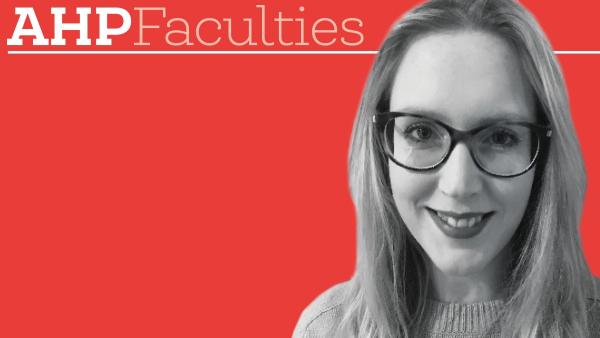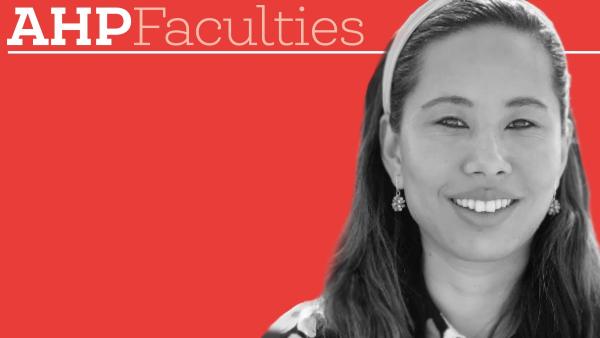Described as the engine room of AHP councils, there are now 42 AHP Faculties across England, one in each integrated care system’s area. Find out more...

A focus on AHP faculties
Driven by an ambition to grow the AHP workforce at local system level, AHP Faculties were developed to improve the coordination of workforce activity across local systems to deliver a thriving pipeline of AHP supply.
This supply is imperative to meet workforce objectives outlined in the NHS Long Term Plan for England.
What’s in it for me?
The AHP Faculties provide CSP members with opportunities to engage and influence the AHP architecture across systems, and at the same time develop core leadership skills, leading to improved outcomes for all stakeholders.
The opportunities for CSP members to be involved in AHP faculties provide a huge amount of scope to raise your profile and build your region’s AHP identity, and deliver the suite of changes needed to support the workforce.
East of England
There are six AHP Faculties in the East of England. Since their establishment just seven months ago, they have escalated the AHP agenda at pace to ensure CSP members and other AHPs are central to designing and supporting the development of a sustainable, inclusive and dynamic workforce.
Bedford, Luton & Milton Keynes (BLMK) AHP Faculty coordinator Hayley Moore said:

‘Being part of the BLMK AHP Faculty is not just about me as an individual, it is about bigger picture thinking and collaboration for the benefit of all stakeholders, not least the patients.
‘In BLMK and the East of England region, organisations have worked hard to break down organisational boundaries and have created a culture aligned to sharing and developing best practice to support workforce development.
‘For example, at BLMK collaborative discussion and learning has led to increased use of the fair share placement model. This model supports organisations to benchmark how many weeks placement can be offered in relation to workforce staffing and in the East of England region this has encouraged NHS organisations to increase their placement capacities, in some cases by up to 200 per cent.
The ambition is that this will provide a sustainable placement model to support wider professional growth as well as local recruitment and retention to support the chain of supply to manage sustainability of healthcare needs.
‘Further, with a drive to improve the workforce diversity, the BLMK Faculty has worked across the ICS footprint to facilitate listening events for Black, Asian and minority ethnic AHPs. The conversations from these events have been used to inform the development of mentorship networks across our system while ensuring equality, diversity and inclusion remains a strategic operational directive at executive level.’
Ashila Bhutia calls for AHP faculty sustainability to be prioritised.

There is uncertainty over the sustainability of AHP Faculties once funding and support ends.
However, the value that AHPs add at a leadership and strategic level and the increase in system-wide performance through cross-organisational collaboration facilitated by the AHP Faculties in the East of England is undeniable. The business case is strong.
‘CSP members need to speak up locally and make it clear that local healthcare systems need to sustain AHP Faculties. It is important to co-ordinate a sustainable, joined up delivery model to ensure enough staff are available to meet demand. We must increase the number of people joining the AHP workforce, reduce attrition in education and training, improve retention of our existing workforce and increase international recruitment.
‘AHPs have long been best placed to inform workforce objectives about our professions. While we cannot work in isolation, providing AHPs with a strategic seat at the table allows us to ensure our workforce objectives are represented by those who understand them best – us! HEE AHP Faculties.
What do AHP Faculties do?
AHP Faculties each have their own workforce priorities, based on local needs.
These may include:
- strengthening return to practice.
- increasing access routes to AHP education.
- supporting early career preceptorship.
- targeting immediate workforce support with ethical international recruitment.
- aligning the AHP support worker programmes from national level.
- championing increased diversity of the AHP groups.
Get active – get involved in your local AHP Faculty
- find out your AHP governance structure.
- connect with your AHP Faculty and AHP workforce leads.
- ask how you could be involved in your AHP Faculty or workforce lead workstreams.
- ask what your local AHP workforce objectives/strategy plans are and how this would benefit you.
- don’t be afraid to effectively challenge the AHP strategy if it does not reflect the operational pressures you are facing.
- advocate for your own career development using coaching and mentorship opportunities.
Number of subscribers: 5




































